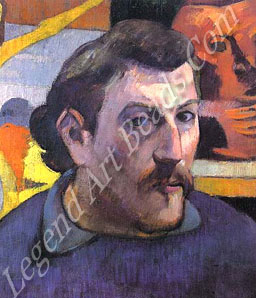 Great
Artist Paul Gauguin Life
Great
Artist Paul Gauguin Life
Paul Gauguin was one of the
most revolutionary painters of the 19th century, as unconventional in his art
as he was in his lifestyle. At the age of 35 he abandoned a respectable
business career to devote himself to painting, and his desire for personal and
artistic freedom eventually made him an outcast from society. His final years
were spent in the South Seas: poor, ill and often without proper materials for
painting.
Gauguin soon reacted against
the light-hearted style in which he began his career and turned to weightier
subjects. His bold colours and shapes expressed his own inner vision rather
than external reality. When he died, Gauguin was virtually forgotten, but an
exhibition of his work in Paris three years later revealed his genius, and
since then he has been one of the greatest influences on 20th-century art.
Stockbroker
in the South Seas
When he became a stockbroker at
the age of 23, Gauguin seemed to have settled for a conventional middle-class
life. But adventure was in his blood, and 12 years later he risked everything
for art.
Paul Gauguin was born in Paris
on 7 June 1848. His father Clovis was a radical journalist, and there was
radical blood on his mother's side, tooAline was the daughter of the
Peruvian-born feminist and socialist Flora Tristan. But the year of Paul's
birth was a bad time for radicals. By November 1848, Louis Napoleon had seized
power in France, and his political opponents had a tendency to disappear.
Clovis decided to visit his wife's relatives, and the family sailed to Peru in
1849.
Clovis died of a heart attack
on the journey from France, but Aline, with Paul and his sister Marie, spent
the next six years in Lima under the protection of her great-uncle. Then Paul's
grandfather died in France, and the family returned to take up their
inheritance in the old man's home town of Orleans.
Dull, provincial and thoroughly
bourgeois, Orleans was a depressing contrast to colourful, subtropical Peru,
and Paul hated it. When he was 17, he did what thousands of restless, adventurous
young men had done before him: he went to sea. He worked for three years on a
merchant vessel, and when he became due for military service in 1868, he chose
to serve his stint in the navy.
Paul was released from the
service in 1871, and it seemed he had got the taste for adventure out of his
system. He was 23, and it was time for him, as a young man of respectable
family, to settle down. His mother had died while he was still at sea, but had
previously arranged for the wealthy banker Gustave Arosa to be Paul's guardian.
Arosa was happy to use his contacts to find him a post with a leading Paris
stockbroker.
A
BUSINESS CAREER
Gauguin's clerkship was a
comfortable, well-paid job, and it gave him plenty of opportunity for lucrative
speculation on the stock exchange. An affluent middle-class future seemed
assured. In 1873 he married a Danish girl, Mette Sophie Gad, and they
progressed from a fine apartment in town to an even finer suburban house, as
Mette regularly produced the next generation of Gauguin’s. By 1883, he had
money, a business reputation, a good home and five children.
But Gauguin had developed a
hobby he liked to paint. His interest in art was encouraged by his guardian,
who had a fine collection of paintings and in whose house most of the
best-known painters of the day appeared from time to time. Gauguin was
encouraged also by Arosa's daughter, an amateur painter, and in 1874 he had
some lessons with the Impressionist Camille Pissarro. But essentially he was
self-taught.
At Arosa's house and elsewhere,
Gauguin had met the leading Impressionist painters and even started to buy
their work. He began to align himself with them, exhibiting in their group
shows from 1879 onward. His paintings came in for a fair amount of praise, and
they sold quite well. Gauguin must have toyed for some time with the idea of
turning professional, but in 1882 his mind was made up for him by a
stock-market crash. Gauguin's 'secure' job suddenly looked anything but secure.
In 1883, confident of his ability to keep his family by painting, he resigned.
Unfortunately, the general
climate of bankruptcy and despondency had much the same effect on the art
market as on the stock market. By 1884, Gauguin's savings had run out, he had
sold scarcely a painting and although a move from Paris to Rouen in Normandy
had reduced his household expenses, his family was fast approaching
destitution. Mette now took a hand. Her husband had had a year as a painter and
failed; now she insisted the family move to her native Denmark.
DESERTING
THE FAMILY
But their move was not a
success. Although Gauguin found a job as a sales representative for a
manufacturer of tarpaulins, he sold no more of his company's goods than he had
of his paintings. Besides, his commitment to his art was now becoming total.
Gauguin returned to painting and in 1885 left once more for Paris, leaving
Mette with four children in Copenhagen. He took six-year-old Clovis with him.
The following year was perhaps
the worst in Gauguin's life. By the winter of 1885-6, he was penniless, and he
and his son were reduced to living in one miserable room. Cold and
undernourished, the boy contracted smallpox; to feed him, Gauguin managed to
find work as a bill-poster for a railway company. Remarkably, Clovis recovered,
but it was the last time Gauguin did anything for his family. From now on,
their fate was in Mette's hands.
In June, Gauguin moved once
more, to Pont-Aven in Brittany, where he found not only cheap lodging but the
company of appreciative fellow-artists. But there was no financial success to
match his growing confidence. Returning to Paris at the end of 1886, he almost
starved during the winter. The following year, he decided to make a complete
break. 'Paris,' he wrote, 'is a desert for a poor man. I must get my energy
back, and I'm going to Panama to live like a native.'
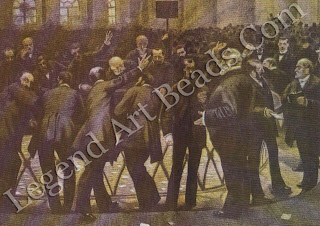 Somehow he scraped together the
fare, but 'living like a native' in Panama turned out to mean labouring with
pick and shovel in the abortive canal project then under way. After a few
weeks, sick with fever, he gave up on Panama and ventured to Martinique in the
French West Indies. Four months later, ill-health and poverty forced him back
to France, and he returned to Brittany.
Somehow he scraped together the
fare, but 'living like a native' in Panama turned out to mean labouring with
pick and shovel in the abortive canal project then under way. After a few
weeks, sick with fever, he gave up on Panama and ventured to Martinique in the
French West Indies. Four months later, ill-health and poverty forced him back
to France, and he returned to Brittany.
A
VISIT TO VAN GOGH
Creatively, this was a vital
period. At the age of 40, he was finding himself at last as a great and
original painter. But the Brittany winters de-pressed him. In October 1888, he
accepted an invitation from Vincent van Gogh, whom he had met two years earlier
in Paris, to pass the winter with him at Arles, in the South of France. But
Gauguin had been there only two months when Van Gogh went famously insane, and
threatened him with a razor. There was nothing for it but to return to Paris.
Over the next few years,
Gauguin alternated between Paris and Brittany, producing some of his best work.
His reputation among his contemporaries had never been higher, but he was still
desperately short of money, and he had never lost his yearning to return to the
tropics. Finally he settled on another French colony Tahiti and on 1 April 1891,
he sailed from Marseilles.
At first, Tahiti was not what he had hoped
for. He got a friendly reception from the Governor, and an audience was
arranged for him with the last native king, Pomare V, who Gauguin hoped would
prove a source of commissions. But Pomare died suddenly of drink a few hours
before the audience. Soon Gauguin was disgusted with the capital of Papeete.
'It was Europe all over again,' he wrote, 'just what I thought I had broken
away from made still worse by colonial snobbery.'
In the country district of
Mataiea, however, Gauguin found the peace he wanted and a young Tahitian girl
to share his hut. Even in paradise, though, the need for money reared its ugly
head. Despite his dreams, Gauguin could not live for free. He lacked the skills
to fish or to farm, and in a community of self-sufficient families there was no
real possibility of buying food. He had to rely on expensive and incongruous
European canned and dried produce, bought in Papeete. A spell of ill-health
made further inroads into his savings, and in 1893 he had to apply to the
Governor to have him-self repatriated to France.
RETURN
TO TAHITI
It was a humiliating return,
but the canvases that Gauguin brought back with him persuaded a leading Paris
gallery-owner to give him an exhibition. Though sales were poor, Gauguin found
himself the centre of the art world's interest. And he had a financial
windfall: an uncle back in Orleans died and left him enough money to set up his
own studio in Montparnasse. But he was determined to return to Tahiti, and left
France for the last time in July 1895.
The eight years that remained
to him were great ones for his art, but Gauguin's life was often miserable.
Most of the times he was desperately short of money and could rarely afford the
stays in hospital that his worsening health due to syphilis demanded. In 1897,
he even attempted suicide. The following year, he contemplated abandoning
painting, and had to take a miserable job as a draughtsman to pay off at least
some of his debts.
Disgusted by colonial society
and its effects on the Tahitians, Gauguin took to writing vitriolic articles
for a local newspaper. In 1901, he abandoned the island altogether and made the
800-mile journey to the Marquesas Islands, where he settled in the village of
Atuona. There, he built his last dwelling, 'The House of Pleasure', as he
called it. Money at last was coming from Paris, and Gauguin was working happily
as well as hard. But he was still making enemies. His attacks on the colonial
administration continued and he waged a continuous war with the Catholic
Church.
In 1903, the authorities took
their revenge. Gauguin was sentenced to three months' imprisonment for
'defamation'. He never served the sentence. On 8 May 1903, aged 54, he died
while awaiting the result of an appeal. The local bishop wrote an uncharitable
epitaph. 'The only noteworthy event here has been the sudden death of a
contemptible individual named Gauguin, a 3: reputed artist, but an enemy of
God.' Posterity had a different verdict.
Writer – Marshall Cavendish
 Somehow he scraped together the
fare, but 'living like a native' in Panama turned out to mean labouring with
pick and shovel in the abortive canal project then under way. After a few
weeks, sick with fever, he gave up on Panama and ventured to Martinique in the
French West Indies. Four months later, ill-health and poverty forced him back
to France, and he returned to Brittany.
Somehow he scraped together the
fare, but 'living like a native' in Panama turned out to mean labouring with
pick and shovel in the abortive canal project then under way. After a few
weeks, sick with fever, he gave up on Panama and ventured to Martinique in the
French West Indies. Four months later, ill-health and poverty forced him back
to France, and he returned to Brittany. 

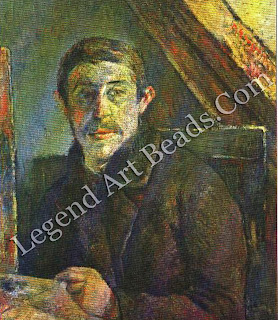
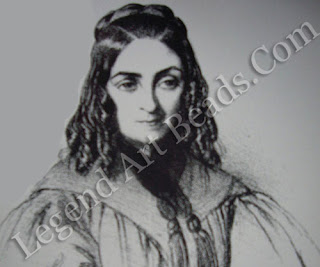
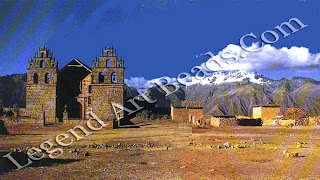
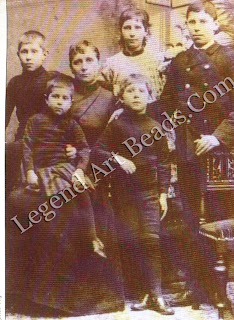

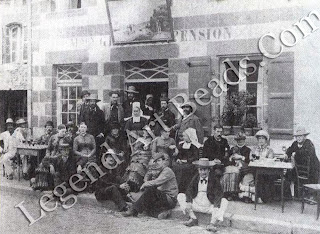
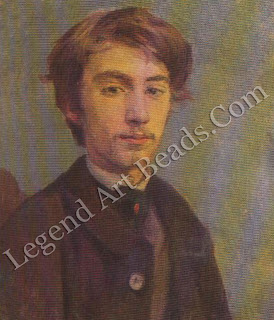










0 Response to "Great French Artist - Paul Gauguin's Life"
Post a Comment